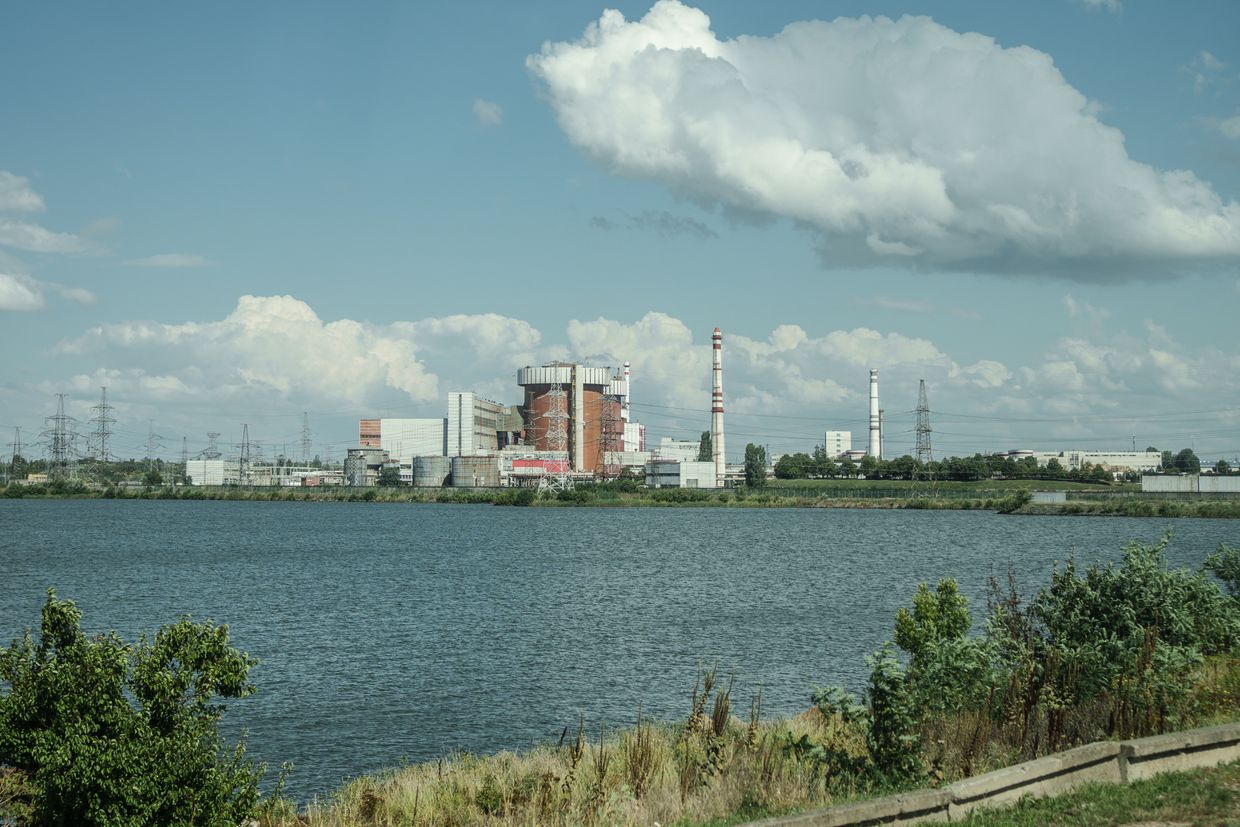Ukraine is in talks with the International Atomic Energy Agency (IAEA) to place foreign observers near its nuclear power plants amid reports Russia is planning to attack the infrastructure connecting the plants to the country's energy grid, an Energy Ministry official said.
President Volodymyr Zelensky warned on Sept. 24 that Russia is planning to strike three power plants as it continues its broader strategy of targeting and crippling Ukraine's energy system for the third year in a row.
While Zelensky did not specify which ones, the country only has three operating nuclear facilities — Rivne and Khmelnytskyi plants in the country's west, and the Pivdennoukrainsk plant in the south. The Chornobyl plant is decommissioned, while the Zaporizhzhia plant has been under Russian occupation since 2022.
Yuliia Kyian, director general for Strategic Planning and European Integration at Ukraine’s Energy Ministry reiterated while speaking at a discussion in Kyiv on Oct. 2 that Russia could target infrastructure, like substations, that are connected to plants.
Russian troops began launching missiles at energy facilities' substations for the first time in August 2024. A substation at the Zaporizhzhia plant was attacked on Oct. 1, cutting off a power line to the facility and threatening a blackout.
Placing foreign observers near all its power plants — though not directly inside of the plants — could help to ensure nuclear and energy stability, Kyian said during the discussion, which was on the topic of energy security organized by the DiXi Group, Eastern Circles, and Prism Ukraine.
"Our highest priority is to safeguard these crucial assets, and we are currently in discussions regarding IAEA missions that could assist in protecting these energy facilities. Deploying such missions would demonstrate to the world that the proper operation of these facilities is vital for nuclear safety and security," Kyian told the Kyiv Independent after the talk.
“Attacks on nuclear plants and additional infrastructure is a threat to the whole world,” she said.
While Ukraine has physical constructions protecting some of its energy facilities, Kyian noted that they are not enough to prevent damage from ballistic missiles and Ukraine lacks air defense systems to fully shield against such attacks.
Nuclear power is Ukraine’s main source of energy and damage to substations could prevent nuclear plants from feeding electricity to the grid or stop backup supplies that ensure the safety of reactors, according to the International Energy Agency (IEA).
International observers are just one idea Ukraine has suggested to safeguard its energy sector in the lead-up to a winter that Ukrainian energy think tank DixiGroup analysts warn could entail eight-hour blackouts.
Currently, Kyiv is discussing the proposal with the IAEA, the global agency for nuclear safety, although Kyian did not disclose the status of the negotiations or the IAEA’s response. She added that Ukraine has also raised the issue with the EU.
Since September 2022, the IAEA has had a mission at the Zaporizhzhia nuclear power plant. Russian authorities still deny inspectors full access to the plant.
Russia's occupation of the Zaporizhzhia plant has led to heightened nuclear safety risks, with Ukraine repeatedly accusing Moscow of using the plant to deploy military personnel and store ammunition and explosives.
Prior to Russia’s full-scale invasion, nuclear power generated half of Ukraine’s electricity. The occupation of the plant in Zaporizhzhia took out a quarter of Ukraine’s electricity supply.
In March 2024, Russia amped up its attacks on energy infrastructure. By May, Ukraine lost a further 9GW of generation capacity after strikes damaged thermal and hydro plants forcing the country to rely more on nuclear power.














